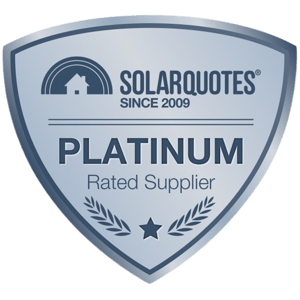Understanding the Solar Panel Installation Process

Discover the ins and outs of installing solar panels on your property with our comprehensive guide.
The Importance of Proper Installation for Solar Panels
Installing solar panels is a significant investment that can provide numerous benefits for both the environment and your energy bills. However, it is crucial to ensure that the installation process is done correctly to maximize the efficiency and longevity of your solar panels. Proper installation helps to avoid potential issues such as leaks, system failures, and underperformance.
One of the key reasons why proper installation is important is to ensure the structural integrity of your property. Solar panels are typically installed on rooftops, and improper installation can put additional stress on the roof structure, leading to potential damage. By following the correct installation procedures, you can ensure that your solar panels are securely mounted and do not compromise the structural integrity of your roof.
Another essential aspect of proper installation is to optimize the performance of your solar panels. Correct positioning and angle of the panels are crucial to maximize sunlight exposure and energy generation. By carefully considering the location and orientation of your property, professional installers can design and install the solar system in a way that maximizes energy production.
Additionally, proper installation ensures the safety of the system. Solar panels generate electricity, and if not installed correctly, they can pose potential electrical hazards. Professional installers have the expertise to handle electrical connections and wiring, ensuring that the system is safely connected to the grid and compliant with relevant electrical codes and regulations.
Overall, proper installation of solar panels is essential to ensure their long-term performance, structural integrity, and safety. By hiring experienced professionals and following the correct installation procedures, you can enjoy the benefits of sustainable energy generation while minimizing potential risks and issues.
Pre-Installation Assessment: Evaluating Site Suitability and Requirements
Before proceeding with the solar panel installation, a thorough pre-installation assessment is necessary to evaluate the site's suitability and requirements. This assessment involves several key steps to ensure that the installation will be successful and efficient.
One of the first steps is evaluating the site's solar potential. This involves assessing the amount of sunlight the site receives throughout the day and year. Factors such as shading from nearby structures or trees can significantly impact the solar potential of the site. By analyzing the site's solar access, installers can determine the optimal placement and positioning of the solar panels.
Additionally, the assessment includes evaluating the structural integrity of the roof or any other mounting location. The roof should be capable of supporting the weight of the solar panels and withstand the additional load. Installers will inspect the roof's condition, checking for any signs of damage or weaknesses that may require repairs or reinforcements before installation.
Moreover, the assessment considers the electrical requirements of the property. This involves evaluating the existing electrical system to ensure compatibility with the solar installation. Installers will examine the electrical panel, metering, and wiring to determine if any upgrades or modifications are necessary to accommodate the solar system.
By conducting a comprehensive pre-installation assessment, installers can gather the necessary information to design the most suitable solar system and ensure a smooth installation process.
Designing the Solar System Layout and Configuration
Designing the layout and configuration of the solar system is a critical step in the installation process. This involves determining the number of panels, their positioning, and the overall system design to maximize energy generation and efficiency.
During the design phase, installers consider various factors such as the available space, shading, and local regulations. They use specialized software and tools to create a detailed layout that optimizes the use of available sunlight and minimizes any potential obstructions.
The configuration of the solar system also includes selecting the appropriate mounting hardware and equipment. This includes choosing the right type of solar panels, inverters, and other components necessary for the system's operation. Installers take into account factors such as the property's energy needs, budget, and any specific requirements or preferences of the property owner.
By carefully designing the solar system layout and configuration, installers can ensure optimal energy production, system performance, and aesthetic integration with the property.
Securing Permits and Approvals for Solar Installation
Before commencing the solar panel installation, it is essential to secure the necessary permits and approvals from relevant authorities. This ensures that the installation complies with local regulations, building codes, and safety standards.
The specific permits and approvals required may vary depending on the location and jurisdiction. However, common permits include building permits, electrical permits, and interconnection agreements with the utility company.
Obtaining permits involves submitting detailed plans and documentation to the relevant authorities, demonstrating compliance with all applicable regulations. This may include providing information about the system design, electrical diagrams, structural calculations, and any other required documentation.
Professional installers have experience in navigating the permit application process and can assist property owners in obtaining the necessary approvals in a timely manner. By adhering to the permitting requirements, property owners can ensure that their solar installation is legal, safe, and meets all necessary standards.
Procuring Quality Solar Equipment and Components
Ensuring the procurement of quality solar equipment and components is crucial for the long-term performance and reliability of the solar system. High-quality equipment not only maximizes energy generation but also reduces the likelihood of failures and maintenance issues.
When selecting solar equipment, it is important to consider factors such as efficiency, durability, and warranty. High-efficiency solar panels can generate more electricity from the same amount of sunlight, resulting in greater energy production. Additionally, durable equipment is designed to withstand various weather conditions and environmental factors, ensuring longevity and minimizing the need for repairs or replacements.
Furthermore, reputable manufacturers often provide longer warranties, indicating their confidence in the reliability and performance of their products. Property owners should carefully review the warranties and choose equipment from trusted manufacturers to ensure they receive adequate support and protection in case of any issues.
Professional installers typically have partnerships with reputable suppliers and manufacturers, ensuring access to high-quality solar equipment. They can guide property owners in selecting the most suitable equipment based on their specific needs, budget, and energy goals.
Roof Preparation and Structural Considerations
Preparing the roof and considering structural factors are essential to ensure a successful solar panel installation. Roof preparation involves assessing the condition of the roof and making any necessary repairs or reinforcements before installation.
Installers inspect the roof for any signs of damage, leaks, or weaknesses that may affect the installation process or compromise the integrity of the solar system. They may need to replace damaged roofing materials, reinforce weak areas, or apply coatings to enhance durability and weather resistance.
Structural considerations also play a crucial role in determining the mounting method and hardware required for the solar panels. The roof should be able to support the additional weight of the panels and withstand various weather conditions. Installers calculate the load-bearing capacity of the roof and design the mounting system accordingly, ensuring a secure and stable installation.
By properly preparing the roof and considering structural factors, installers can ensure the long-term performance and safety of the solar system.
Installing Solar Panels and Mounting Hardware
The installation of solar panels and mounting hardware is a crucial step in the solar panel installation process. This involves securely attaching the panels to the roof or other mounting locations using the appropriate hardware and techniques.
During the installation, installers carefully position and align the solar panels to optimize sunlight exposure and energy generation. They ensure that the panels are securely mounted and aligned at the correct angle to maximize energy production throughout the day.
Professional installers have the expertise and equipment required to handle the installation process efficiently and safely. They follow industry best practices to ensure that the panels are securely attached and do not pose any risks or hazards.
Additionally, installers may also install other components such as inverters, wiring, and monitoring systems as part of the solar panel installation. They carefully connect and integrate these components to ensure the proper functioning of the solar system.
By entrusting the installation to experienced professionals, property owners can have peace of mind knowing that the solar panels are installed correctly and will perform optimally.
Electrical Wiring and Connection to the Grid
The electrical wiring and connection to the grid are critical aspects of the solar panel installation process. This involves safely and correctly connecting the solar system to the property's electrical system and the utility grid.
Professional installers have the necessary knowledge and expertise to handle the electrical connections and ensure compliance with all relevant electrical codes and regulations. They carefully install the wiring, inverters, and other electrical components, following industry safety standards.
The connection to the grid involves coordinating with the utility company to establish the net metering arrangement. Net metering allows property owners to receive credits for any excess electricity generated by the solar system and exported to the grid. Installers work closely with the utility company to ensure a smooth connection process and proper metering.
By entrusting the electrical wiring and grid connection to professionals, property owners can ensure the safe and efficient operation of their solar system.
System Testing and Commissioning
After the solar panel installation is complete, thorough system testing and commissioning are necessary to ensure proper operation and performance.
Installers conduct various tests to verify the functionality and efficiency of the solar system. This may include testing individual panels, checking the electrical connections, and verifying the performance of the inverters and other components.
Additionally, installers may perform a comprehensive inspection of the entire system to identify any potential issues or areas for improvement.
Once the system testing is complete and any necessary adjustments are made, installers commission the solar system for operation. This involves activating the system, configuring the monitoring systems, and ensuring that all components are functioning correctly.
By conducting thorough testing and commissioning, installers can guarantee the proper operation and performance of the solar system, providing property owners with confidence in their investment.
Conclusion: Ensuring a Successful Solar Panel Installation for Sustainable Energy Generation
A successful solar panel installation is crucial for sustainable energy generation and the numerous benefits it brings. Understanding the importance of proper installation, conducting a thorough pre-installation assessment, and following the correct procedures are key to ensuring a successful installation.
By hiring experienced professionals, property owners can benefit from their expertise in site evaluation, system design, and installation techniques. Professional installers can navigate the permit application process, procure quality equipment, and handle the electrical connections and grid integration.
Proper roof preparation, structural considerations, and secure installation methods are essential for the long-term performance and safety of the solar system. Thorough system testing and commissioning further guarantee the proper operation and efficiency of the system.
By following the comprehensive solar panel installation process, property owners can enjoy the benefits of sustainable energy generation, reduced electricity bills, and a smaller carbon footprint.
%20(1).png?width=265&height=96&name=www.smartenergyanswers.com.auhs-fshubfsSmart%20Energy%20Answers%20Logo%20(HIRES)%20(1).png)

.png?width=514&height=121&name=Tesla%20Powerwall%203%20(new).png)







